There are hundreds of SEO factors to consider when optimizing a website for search engines but not all rules are equal.
Some rules are more important than others and, in this post, you’ll learn the 19 SEO practices to follow for the best possible results.
The list was carefully crafted to include tips that cover all SEO concepts including on-page SEO, technical SEO, and Off-Page SEO.
For each item in the list, you will get an explanation of why it’s important, best practices to follow and a pro hint for even better results.
So, if you want to improve your Google rankings and get more traffic to your website from search engines, get a cup of coffee and go through the checklist below.
For sure, you’ll find some practices that are worth considering.
SEO Best Practices Checklist
- Include your target keywords in the Page Title
- Include your target keywords in the URL
- Include your target keywords high in your opening paragraph
- Include your target keywords in the meta description
- Optimize your H1 tags and headings
- Publish content related to keywords that users search for
- Avoid targeting the same keywords in different articles
- Optimize image alt text
- Use proper anchor text for internal links
- Optimize for sitelinks
- Secure your website’s connection with HTTPS
- Make sure that your content is fast and easy to access to all devices
- Add a breadcrumb menu to all your pages
- Use canonical URLs to specify your preferred domain and solve duplicate content issues
- Register your website with webmaster tools
- Add structured data markup on your pages where applicable
- Keep your existing content fresh and up to date
- Publish new content regularly targeting new keywords
- Build brand mentions (with or without links)
1. Include your target keywords in the Page Title
Page title optimization is perhaps the most important SEO factor. The page title gives search engines a very good hint on what the page content is about. It is also shown in the search results and social media snippets.
Best Practices
Make sure that in the title you include keywords or search terms that users recognize. This will help search engines associate your page with particular keywords and make your search snippet more relevant to the users.
Keep the title short (max 60 characters) so that it is shown without breaking on both desktop and mobile search results.
Besides adding relevant keywords, you can also make use of power words (such as top, best, complete, amazing, definite) to make the title more interesting and inviting to users to click it.
Adding brackets in the title is proven to increase CTR (click-through rates).
For example, consider these two titles that are targeting the same SEO keyword (alt text for images), which one would you select?
- Alt Text for Images – The Complete Guide (Updated for 2019 SEO)
- Why use alt text for images?
I guess is the first example because it prepares users that they will read an in-depth guide about alt text and that they will read up-to-date information. It is also eye-catching compared to the second example.
Pro Hint
Here is a pro hint for you that is very important.
Before making a final decision on the title to use for a post, open up Google and search for your target keywords and study the titles shown on the first page of Google.
Make sure that your title is not a duplicate of what is already there. Google rarely ranks pages with exactly the same titles on the first page of the results so make sure that your title is unique and different from the rest.
2. Include your target keywords in the URL
URL optimization is also important but something that is neglected by many SEOs and webmasters. Having URLs that are short and informative is beneficial because:
It is sometimes shown in the search results (see example below).

When a URL is shared in a social media post or forum, it makes it easy for users to understand what the page content is about.
It’s a great way to give search engines crawlers another hint about the page.
Best Practices
Unlike page titles, URLs have to be short and precise. No need to include additional information or words to the URL. In fact, it’s a good practice to strip common words (it, on, the, etc.) and keep the URL as short as possible.
Make URLs an exact match of your target keyword or an exact match of a long-tail keyword.
For example:
If your page title is “SEO Certifications: The Complete Guide (Courses and Cost)” the URL can be https://www.reliablesoft.net/seo-certifications.
In the above example, the target keyword is “seo certifications” and it is used as an exact match in the URL.
Another example:
The page title is “How Hard is to Learn SEO from Scratch? (Includes Learning Plan)” and URL is https://www.reliablesoft.net/is-seo-hard-to-learn, which is an exact match of a long-tail keyword.
Pro Hint
Avoid having dates in the URLs so that you can update your content without worrying about the URL.
For example, if you have a post with the title “Best SEO Practices for 2020”, in the URL keep only the /best-seo-practices part and don’t include the date. This way when you update the title and content for 2021, the URL won’t be an issue.
For more information read: How to create SEO friendly URLs
3. Include your target keywords high in your opening paragraph
Users don’t like to read long introductions, and they don’t want to read more information that they really need.
Keeping you post introductions short and having keywords that users can recognize high in your opening paragraph, makes the content more relevant to their search query and it increases the chances of staying on your page to read the rest of the content.
It also helps search engines associating your page with the keywords you want, right from the beginning.
Best Practices
Include your target keywords and related keywords in your opening paragraph and in the first few paragraphs of your page or post.
Look at the following example:
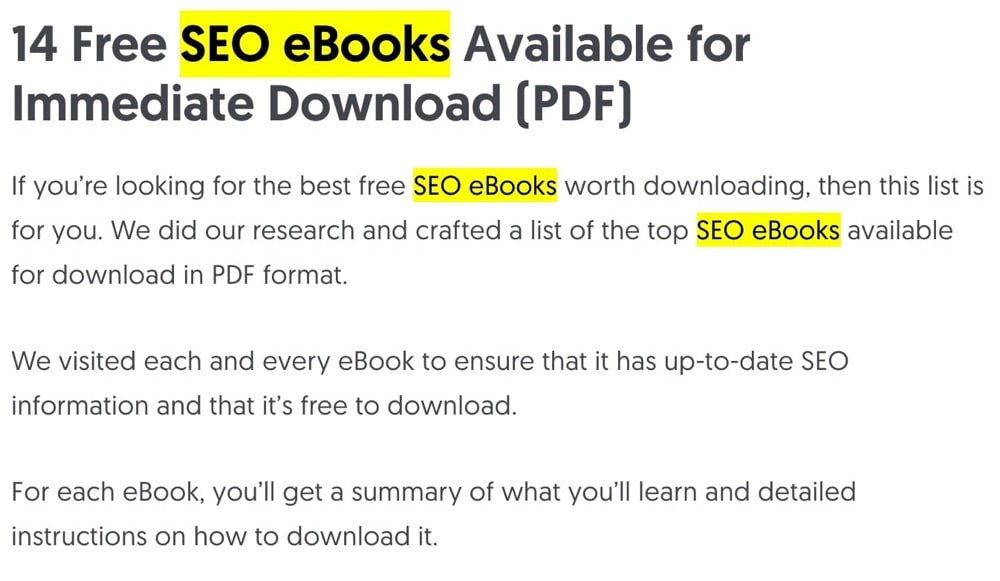
Pro Hint
Avoid keyword stuffing. Add the keywords naturally in the text to give both users and search engine crawlers a nice introduction about your page’s context.
4. Include your target keywords in the meta description
The meta description is hidden to users but accessible by search engines. It is shown in the search results as part of a search snippet.
Although search engines may decide to use a different value for the meta description and not show what is specified by the user, it’s always a good SEO practice to have unique meta descriptions of ALL your pages.
Best Practices
Keep the meta description length to 200 characters.
Optimize your meta descriptions for mobile search results. It is very likely that the majority of your traffic is coming from mobile devices and on mobile results, Google shows more characters for the description than desktop. The average is 200 characters.
Add your target keywords in the description. It makes your search snippet more relevant to what users are searching for. Also, search engines tend to highlight the matching keywords which make your search snippet more attractive to clicks.

Pro Hint
For eCommerce websites, use the meta description to give users more information about your products (like price, color, sizes, etc.) and any available special offers.
5. Optimize your H1 tags and headings
The h1 tag should not be confused with the page title.
The H1 tag (<H1>) is shown on the body of a page while the page title (<TITLE>) is shown in the browser window, social media snippets and organic search results.
The role of the H1 tag and other headings (h2, h3, etc) is to make content easier to read by users and faster to scan by search engines.
If you are confused about this, read more about the difference between a page title and an H1 tag.
Best Practices
Although Google has mentioned a few times that having tags marked as H1, H2, etc is not a big deal, for best SEO practices, it’s good to optimize your headings.
Optimization is this context means:
To have only one H1 tag per page. This is for the page title and it is shown on the top of the document.
Structure your content in such a way so that the main headings are <H2> and subheadings as H3.
Think about this like the structure of a book where the page title is the title of the book (that’s the H1), the main headings are the chapters (that’s H2) and the important sections within a chapter are the H3.
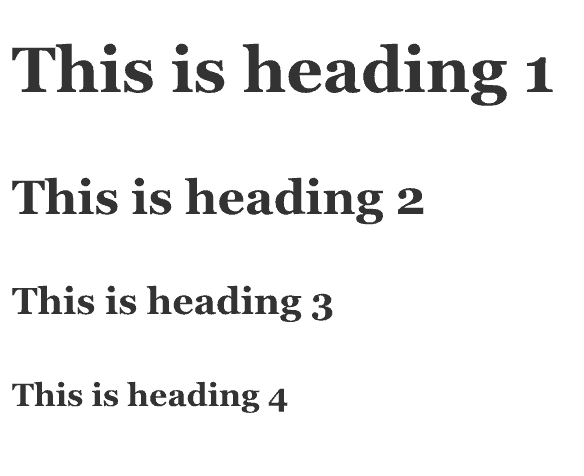
Add keywords relevant to your target keyword in the headings to help users and search engines understand that the particular section of the page talks about.
Pro Hint
If you get into the habit of structuring your content using headings, you make the page easier to scan for users who like to skim read content. You can use headings to get their attention and stay on a page longer.
6. Publish content related to keywords that users search for
For any page to rank high on Google, it has to serve a specific purpose. Google ranks pages with content that answers a user’s query. If this is not the case, then there is no incentive for Google to index and rank a page with non-searchable content.
Best Practices
Before deciding on what topics to cover in your posts or what keywords to optimize your homepage or other pages, it is important to do your research to find out what people type in the Google search box and provide content that is relevant to their queries.
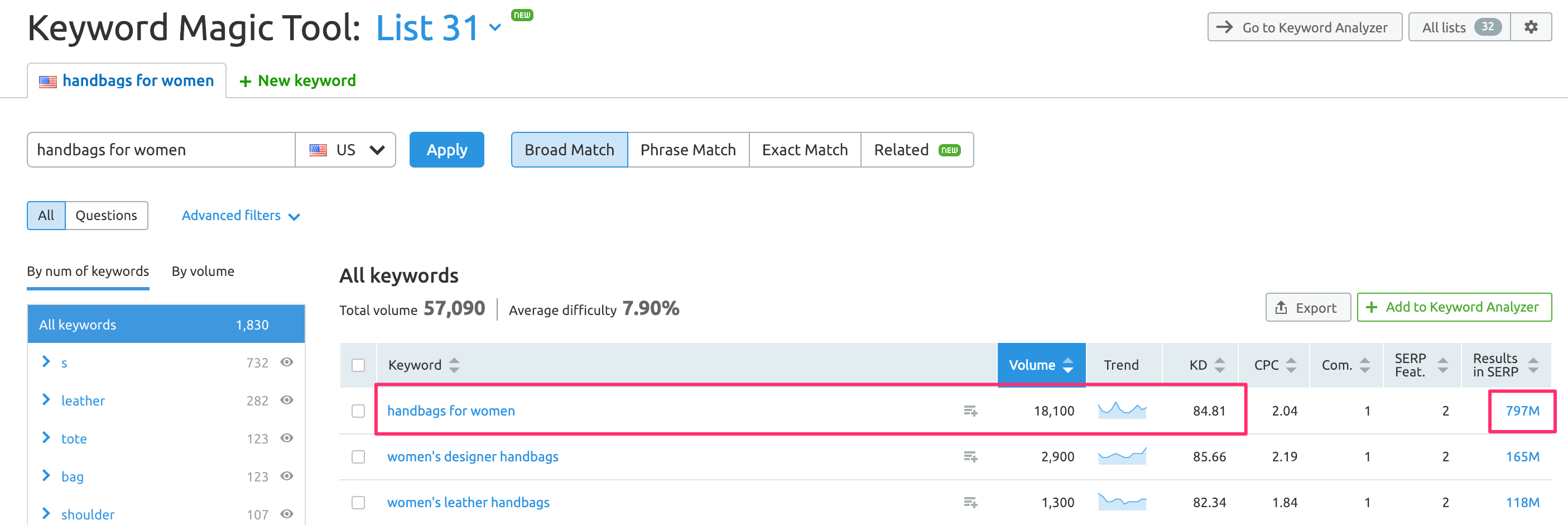
This is known in the SEO world as keyword research
So, the first step is to perform keyword research and come up with a list of topics related to your business goals.
Then, you should write content that satisfies a specific search query. Don’t make your posts too general to cover many keywords, that’s not the way it works. Each page on your site needs to focus on a single keyword only.
Pro Hint
Take for example the post you are reading now, it is targeting “SEO Best Practices” and although it includes several related keywords in the content, it is made clear from the title, URL, headings and structure that the main focus is best practices for SEO and not anything else.
7. Avoid targeting the same keywords in different articles
This is related to the SEO advice given above. If you have pages on your website that are targeting the same or closely similar keywords, this will confuse Google as to which page to show in the results. This can sometimes lead to not showing any of the pages.
Best Practices
Each page on your website should target a specific keyword. If you have pages that are targeting the same keywords, you should consider merging the two pages into one, adding a 301 Redirection and removing the duplicate page.
Pro Hint
As your site get’s bigger it is common to have pages targeting similar keywords. To solve this problem, it is recommended to perform a content audit on a regular basis and deal with these issues.
Read this Guide: How to solve thin content issues for more information.
8. Optimize image alt text
Images are part of a page’s content but search engines have hard trouble understanding the context of an image during the crawling and indexing phase.
For this reason, it is a good practice to use an ALT text for all your images. The ALT TEXT is an attribute added to the image tag which describes the image in plain words.
All modern CMS allows you to specify the ALT TEXT when uploading an image. This is how it looks in the HTML code:

Best Practices
For best SEO results, follow these practices when adding alt text to your images.
- Specify an ALT text for all your images (including the site logo)
- Write alt text that is representative for the image
- Use multiple words but keep it short (one sentence only)
- Include your target keywords (or related in the alt text)
- Don’t use the words ‘image’ or ‘picture’ is not needed. Google knows what it is.
Pro Hint
For local SEO purposes, you can use the alt text to give Google more hints about the area your business is located. For example, if you have an image of your shop in the about us page, you can write something like “[brand name] local shop in Southern California”.
For more information about image optimization read: Image SEO Best Practices
9. Use proper anchor text for internal links
Internal linking is a great SEO practice. You can use internal links within your content to link to other pages of your website.
This helps Google discover and index more pages from your website and it also gives users the option to find out more about a topic.
Look at the internal links spread out in this post and notice how they can help the reader find out more details about a certain SEO practice.
Best Practices
Pay special attention to the anchor text of internal links. The anchor text is the visible part of a link. Look at the example below:

Google has many times mentioned that you should use meaningful anchor text that accurately describes the target page.
For example, if I want to link to my ‘Become an SEO Expert’ page, I will use the anchor text ‘Become an SEO expert’, or ‘SEO Expert’ instead of ‘Read this’ or ‘Click here’.
For best practices, don’t use general words but use anchor text that makes sense.
There is no Google penalty from using keyword research anchor text for internal links.
Pro Hint
In cases you have difficulties in adding internal links naturally in your content, you can use a ‘Further Reading’ or ‘Related Articles’ section within your content and link to other articles using the full title. See the example below:
For more information about internal linking read: Internal linking best practices for SEO.
10. Optimize for sitelinks
Sitelinks are automatically added to a search snippet and displayed in the search results.
Although Google does not allow you to specify which sitelinks to use, you can follow several practices to help them pick up the right sitelinks for your website.
Here is an example of the sitelinks displayed for my website:
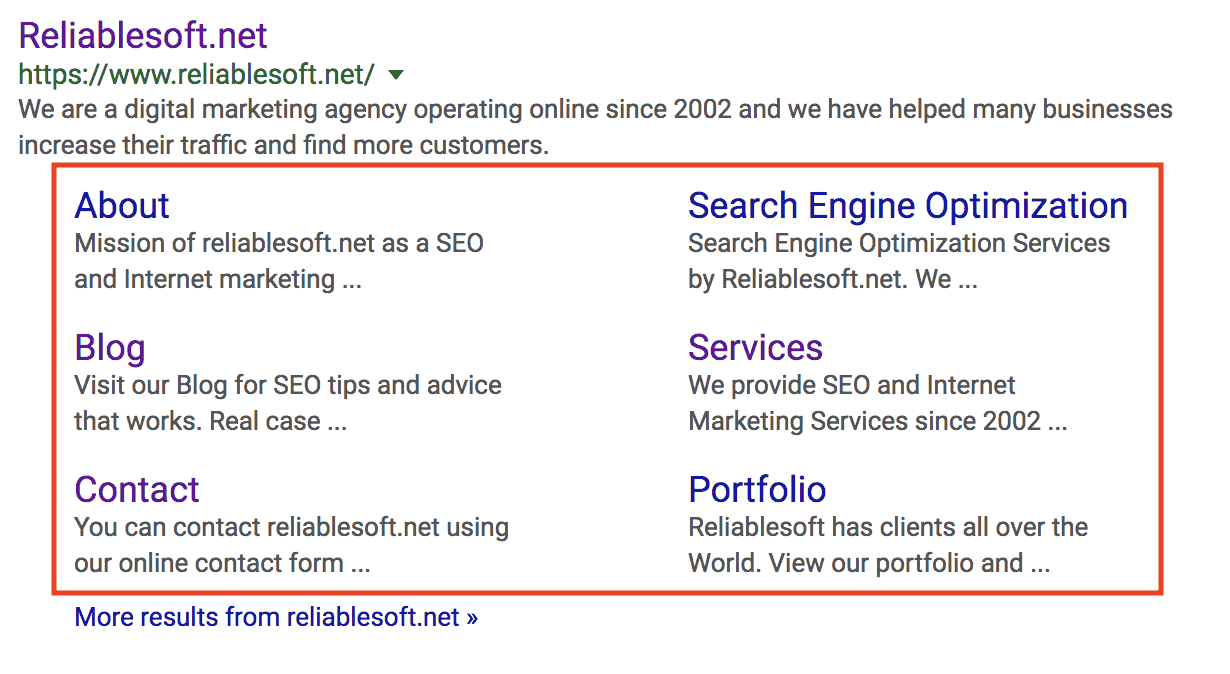
Best Practices
Your navigation menu should match the site structure. A good site structure is hierarchical and is no more than three levels deep. A user should be able to navigate to any level using the main menu.
Pages you want to appear as sitelinks need to have internal links pointing to them with proper anchor text. This helps Google understand which pages you considered to be more important and what those pages are about.
Crawling and indexing start from the homepage so link to important pages from your homepage.
Add pages you want to appear as sitelinks in your sidebar.
Pro Hint
Google shows sitelinks for individual pages (not just brand-related searches). Here is an example:

To help Google show sitelinks for your pages, add a table of contents on top of the page and name sections using the <id> attribute or the <a name=””> attribute.
For example, look at the best practices’ checklist table on top of this post and notice that each practice is a link which points to a section of this document. This structure helps search engines pick up the titles of individual sections and show them as sitelinks whenever applicable.
11. Secure your website’s connection with HTTPS
This is a must not only for SEO purposes but for winning user’s trust. An https indicates that the communication between the website and the server is secure and any user data entered is encrypted.

Best Practices
Make sure that you install a valid SSL on your server and all links (either internal or external), start with https. This includes links to images, CSS files, and JavaScript.
Make sure that your website listens only to https requests. When a user types a URL without the https, the website should automatically redirect the user to the https equivalent version.
Pro Hint
If you are migrating from http to https, make sure that you do the transition correctly without affecting your SEO.
This involves adding 301 redirects for all your URLs and adding and verifying all 4 versions of your website with Google Search Console.
12. Make sure that your content is fast and easy to access to all devices
Speed is a known Google ranking factor. Other things being equal, websites that load fast are more likely to rank higher than slower websites.
Speed also impacts conversions and customer retention, especially on mobile devices.

Best Practices
Check your site speed with Google page insights and try to achieve a score of more than 90% for both desktop and mobile.
Make sure that your website loads in less than 3 seconds on mobile (on a 3G connection). You can test the loading time using this tool from Google.
Pro Hint
One way to improve the loading time of your website is to use lazy loading for images and videos. Lazy loading is a mechanism by which videos or images are not loaded until they are in the user’s viewport.
Lazy loading makes a big difference in the time it takes for a page that has a lot of images to load, especially on mobile.
If you are on WordPress, you can use WP-ROCKET or this plugin from Google to enable lazy loading on your site. No coding is required.
13. Add a breadcrumb menu to all your pages
A breadcrumb menu is a small menu trail shown at the top of a page and allows you to go back to the previous level or to the homepage.

Breadcrumb trails improve the user experience, they enhance your search snippets (Google is sometimes showing the breadcrumb menu in the search results instead of the page URL) and Google has been recommending using breadcrumbs for decades.
Best Practices
The first thing to do is to make sure that you have breadcrumbs enabled on your website and they are visible to the users.
Check and adjust the size and position of the breadcrumbs on mobile. You need to ensure that the users on mobile can easily click a link from a breadcrumb menu.
Make use of the breadcrumb schema to help search engines understand how your breadcrumb trails are structured.
Pro Hint
If you are on WordPress, activate the breadcrumb menu through Yoast SEO plugin. It adds the necessary schema markup automatically.
For more information on how to SEO optimize your breadcrumb menus, read this guide: Breadcrumbs and SEO.
14. Use canonical URLs to specify your preferred domain and solve duplicate content issues
One of the most important practices of technical SEO is the correct usage of canonical URLs.
A canonical URL is not visible to the users but it’s added in the HTML code of a page (HEAD section) and gives information to search engines about the preferred URL of a page.
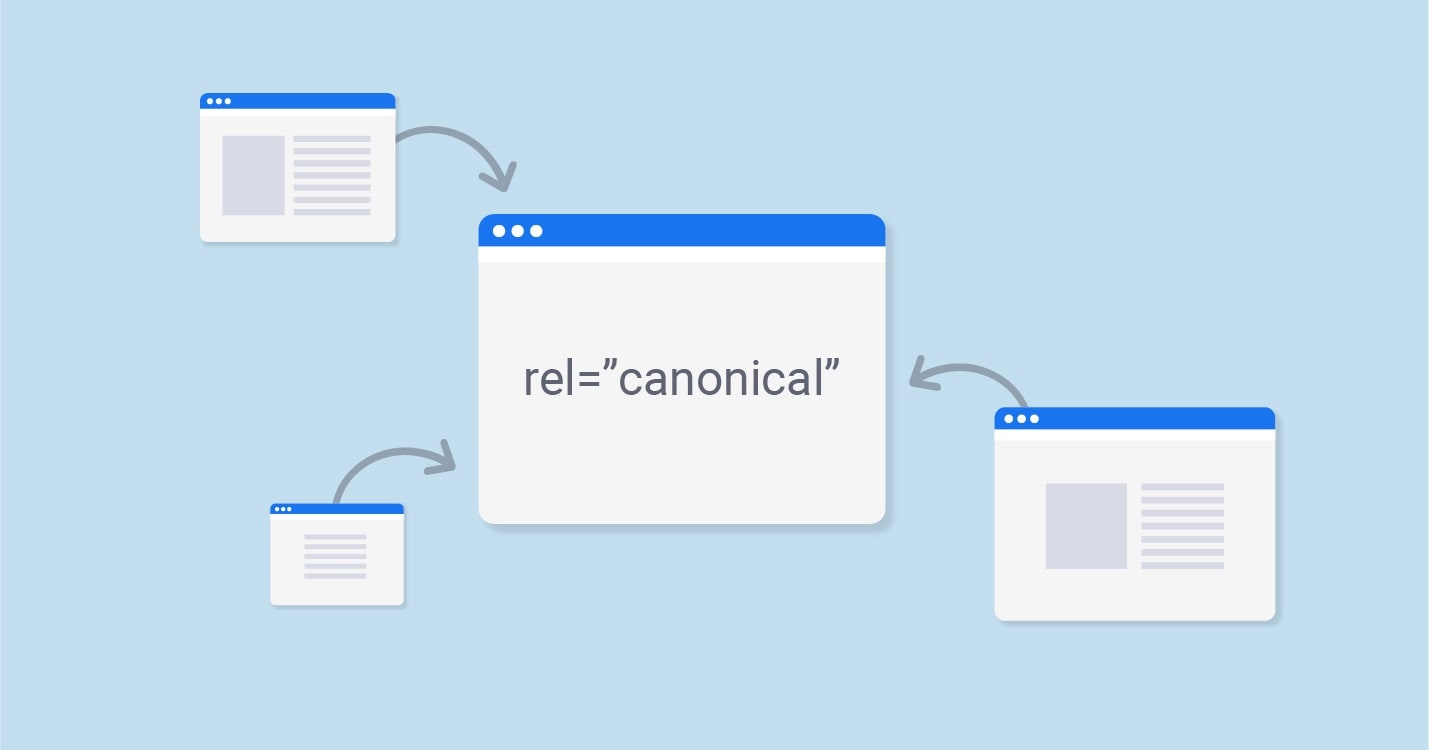
A canonical URL is used:
- Specify the preferred domain to Google
- Solve duplicate content issues
Best Practices
Make sure that all your pages (including the homepage) have the canonical URL defined in the HEAD section.
All canonical URLs should be defined in the same format as your homepage.
For pages that have the same or similar content, choose which one you want Google to index and configure your canonical URLs accordingly.
Pro Hint
Use canonical URLs to solve duplicate content issues for pages that you don’t want to remove from your site. For pages, you can delete or merge together, consider adding a 301 redirection instead of a canonical URL.
For an in-depth explanation of how to use canonical URLS, read this guide: What is the meaning of a canonical URL
15. Register your website with webmaster tools
One of the nice things about SEO is that everything is measurable. There are tools to analyze your SEO performance and learn for which keywords you are ranking, how much traffic you get from search engines, how many pages they have in their index and much more useful information.
All major search engines have webmaster tools that help owners configure and optimize their websites for search.
Best Practices
- Add the verify your website with Google Search Console
- Add your website to Bing webmaster tools
- Create an optimized XML sitemap
- Submit sitemap to Google and Bing
- Find and fix crawls errors using Google Search Console
If you follow the above steps, you will have a better idea of how your website is performing in search and which areas of your SEO need further improvement.
Pro Hint
You can use the Google search console not just to find and fix crawl errors but also to ask google to recrawl your site or individual pages and speed up the indexing process. This is especially useful when you update an existing page and don’t’ want to wait for Google to find out.
16. Add structured data markup on your pages where applicable
One of the modern SEO best practices to follow is structured data. Adding structured data and schema markup on your website, helps search engines understand your content better.
Google is using structured data information to display rich snippets and other search features.
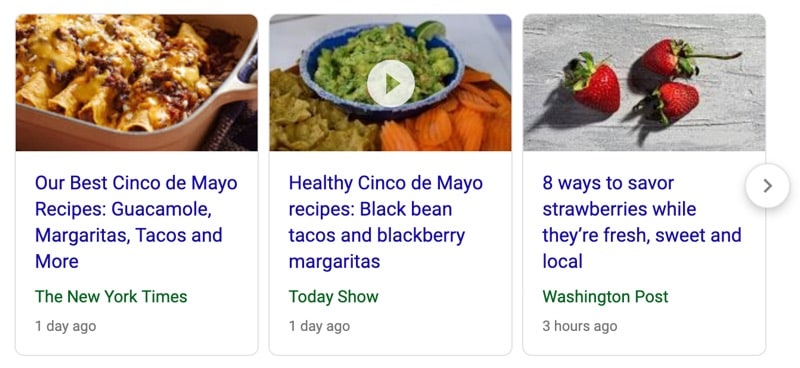
Best Practices
- Add the right type of structured data on your pages. You can view the list of all available types here.
- Add structured data on the homepage as well (website, company or localbusiness are good candidates).
- Check your code for errors using the structured data testing tool (before the implementation).
- Use the URL Inspection tool to check for errors (after the implementation).
Pro Hint
Make sure you read Google’s guidelines related to structured data markup usage and don’t try to bypass or ignore their rules.
Implementing structured data will not only improve your rankings in search but it will also help with voice search as well.
17. Keep your existing content fresh and up to date
If you follow the SEO best practices described in this post, your rankings will increase and this is a great first step.
Don’t forget that to maintain your rankings, besides following good SEO practices, you also need to have content that is fresh and up to date.
Google does not want outdated content in its results so if you want to maintain your Google rankings, you need to go back and update your existing content on a regular basis.
Best Practices
- Review the content for accuracy
- Add more text content (if applicable)
- Check for broken links
- Remove / Update outdated graphics
- Update links pointing to old studies or data that is no longer valid
- Review your meta descriptions
- Consider enhancing your content with structured data
- Change the last updated date to reflect the date that the page was last updated.
Pro Hint
When you make important changes to a page that is already ranking high and want your chances to appear faster in Google, use the URL inspection tool (Google Search Console) and click the Request Indexing button. This will speed up the process dramatically.
18. Publish new content regularly targeting new keywords
Despite what you may have read already by other experts, adding new content on your site on a regular basis is important for many reasons.
Think about it this way. Your website is already ranking for a number of keywords and you get traffic from search engines. This is great but unless something dramatically changes, your traffic and rankings won’t increase.
To increase your traffic, you either need to get new links from other websites or publish content targeting new keywords that can potentially increase visibility on Google and other search engines.
In an ideal world, you should do both but the first one (links) is too hard to get right and does not always depend on you, while the second one (publishing new content), is something you can control 100%.
Best Practices
Create a content calendar and try to establish a publishing schedule. This helps both search engine crawlers and users know when to expect new content from you.
Make sure that you target new keywords and not keywords that you already have content about (even if it’s not ranking high in the search results).
Publish amazing content. Before deciding on what to publish check the first page of Google. If you can do something better then go for it, otherwise, choose a different topic/keyword.
Publish long-form content when it matters. Content length is not an SEO ranking factor so spend your time and resources wisely. You don’t have to write 4000 words for every article you publish.
Pro Hint
Use Google trends to find out what are the trending searches related to your industry.
If you see a topic listed as Rising then go for it. Topics listed in Google trends are a good indication that more people than usual are searching for that topic and Google would love to get new content around it.
19. Build brand mentions (with or without links)
You most probably know that you need backlinks to achieve high rankings in search but what you might not know is that you need brand mentions as well.
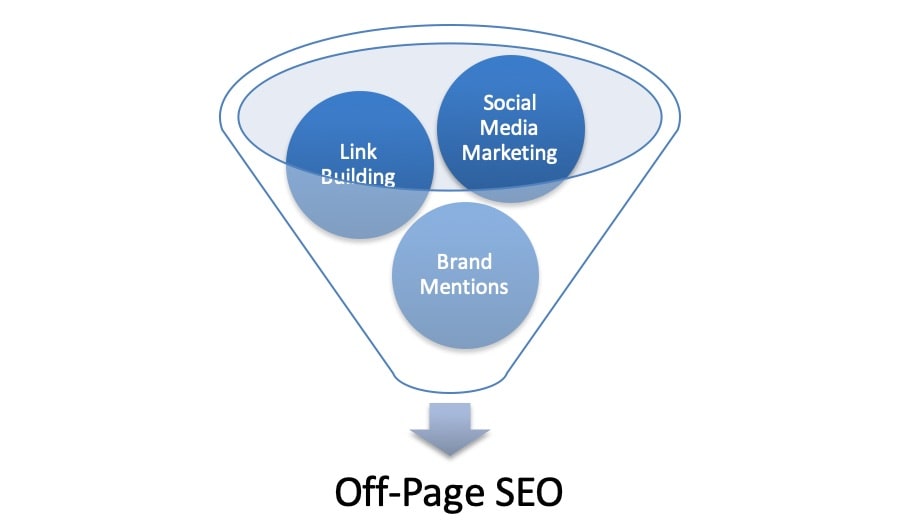
Google prefers to rank brands because they are trusted by users. For your SEO it means two things:
First, is that you still need to get high-quality links from other websites to establish good domain authority.
Second, you need to go after mentions of your brand that do not necessarily come with a link. These can be mentions of your brand in social media, forums or other places that have links but with the nofollow attribute.
In other words, try to encourage people to talk, link, discuss and search about your brand on Google. These signals will gradually be considered by the search algorithms and can have a great influence on your search rankings.
Best Practices
Think outside the box and be creative when it comes to link building and brand mentions. What would make you link to a website or talk about a brand?
Building personal connections by contacting people that can potentially link to your website or mention your brand is the best way to build links these days.
Forget about mass emailing, it does no longer work. Instead, create a list of people you want to contact and personalize your messages as much as possible.
Pro Hint
Don’t forget it’s best to help someone fist and then ask for a favor. When you contact other webmasters look at their websites and suggest ways you can help them and don’t directly ask for a favor.
Read: What is a nofollow link for more information on how links are valued by search engines.
If you have reached this part, congratulations! It’s almost guaranteed that if you follow these top practices you will boost your SEO. If you think an item is missing from the list, let me know in the comments.





Hey Alex,
Enjoyed your blog a lot. I think a key few components that are missing are:
a) mobile responsiveness
b) E-A-T
c) having quality backlinks from relevant pages
Other than that, its a good piece and I will sharing with my colleagues.
Cheers!